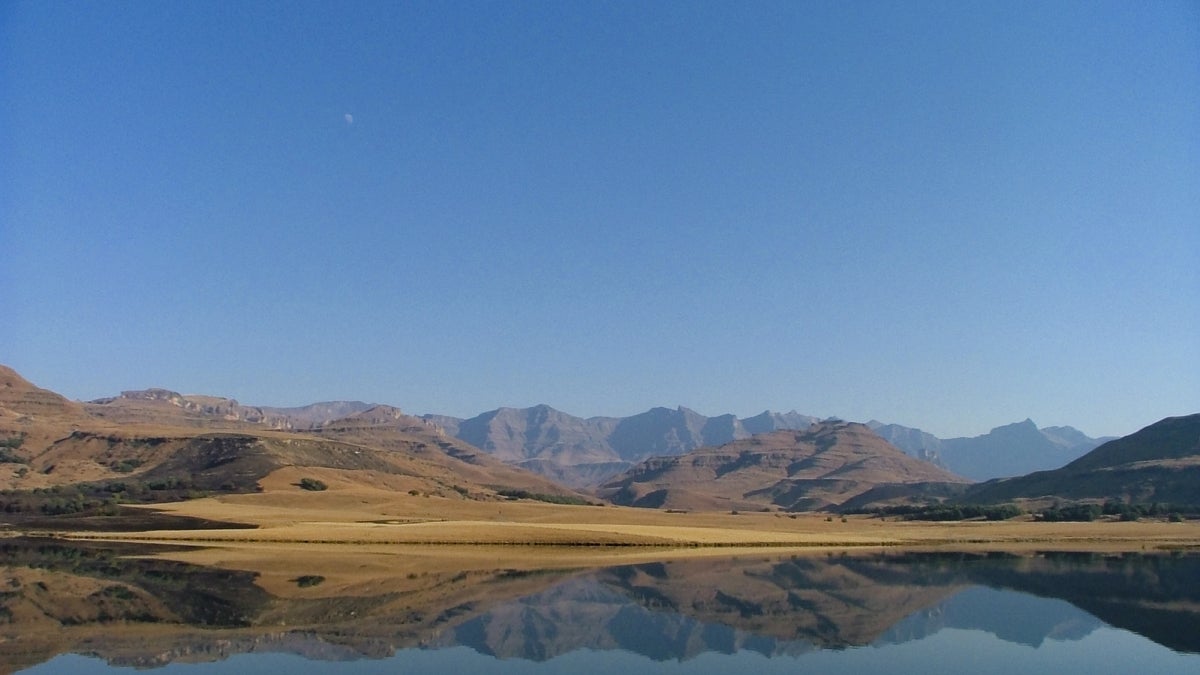Arizona State University today announced a five-year initiative, FutureH2O, to flip the global conversation about water on its head and focus on the abundance of water and how to create it instead of hand-wringing about scarcity.
ASU will work with large corporate water consumers to restore what they use, train a new generation of leaders on water usage, turn a Phoenix area municipality into a model for reducing outdoor water use and maximize sensors, data and the Internet around the world to instantly manage water and hydropower.
John Sabo, an ASU professor in the School of Life Sciences and director of the new initiative, led the announcement at today’s White House Water Summit.
“FutureH2O will look for new opportunities to harness the abundance of water on the planet,” said Sabo, a senior sustainability scientist in the Julie Ann Wrigley Global Institute of Sustainability at ASU. “Some of these opportunities are things you’d expect us to do as a university, like training the next generation of water managers. But some of the other opportunities are things that ASU is uniquely poised to do.”
“We want to learn how to make it ‘cool’ to conserve. But, more importantly, we need to figure out how to finance the transition to this future. FutureH2O plans to be in the middle of that conversation whether it’s happening in our backyard, on a farm or in the developing world.”
— ASU professor John Sabo, director of the new FutureH2O initiative
ASU’s work with the private sector, such as technology transfer and helping incubate businesses, and its strong relationships with all levels of government, enable the university to create the partnerships necessary to incentivize efficiency and conservation.
“We want to learn how to make it ‘cool’ to conserve,” Sabo said. “But, more importantly, we need to figure out how to finance the transition to this future. FutureH2O plans to be in the middle of that conversation whether it’s happening in our backyard, on a farm or in the developing world.”
The initiative will work towards the following five goals:
• Develop public-private partnerships to fund an urban landscape design and renovation campaign that reduces residential outdoor water use in at least one Phoenix metro service area by a third by 2025.
• Deliver research and advice to at least 10 of the largest corporate water users in the U.S. to scope, plan and implement restoration projects at scales that improve water reliability in stressed water basins nationwide.
• Develop online learning platforms for undergraduate and professional clients that cross-train the next generation of water leaders. They will collaborate with energy leaders to find solutions to the complex demands of water usage in producing food and energy, and train 1,000 such leaders across the U.S. Sunbelt in the next 10 years.
• Build a food-energy-water technology test bed at ASU and use demonstration projects from this test bed as game-changers for the future of agriculture in the arid Southwest.
• Transform how institutions in the U.S. and developing world embrace, deploy, use and share sensors, data and the Internet of Things to improve real-time management of water, hydropower, fisheries and agriculture in large river basins.
A second ASU commitment that will be made at the White House Summit is on SciStarter, a research affiliate of ASU’s Center for Engagement and Training in Science and Society (ASU CENTSS). Darlene Cavalier of ASU’s School for the Future of Innovation in Society said ASU is committing to advance citizen science to build a sustainable water future by:
• Expanding the network and impact of citizen science, SciStarter has trained more than 40 citizen-science teams (more than 1,700 individuals) nationwide to take soil-moisture measurements to validate data captured by NASA’s Soil Moisture Active Passive satellite. SciStarter will train an additional 60 teams over the next 18 months — including at least one team in every U.S. state.
• Establishing a “Lending Library” of soil-moisture monitoring equipment, SciStarter will launch programs in Atlanta, Philadelphia and Phoenix — to partner with local science museums and libraries to provide training on the equipment. These cities will serve as pilot projects to establish regional networks of lending libraries anchored in science museums across the country.
The White House event will be webcast live at www.whitehouse.gov/live.
Top photo by Robbie Ribeiro/Freeimages.com
More Environment and sustainability

Driving green desalination
Wilderness survival TV show hosts, pirates and water treatment researchers agree on one thing: Most natural water sources are not safe for drinking. Among the many potential risks is the high salt…

ASU preservation facility serves as test bed for rooftop heat mitigation
A roof coating that uses thermal energy storage materials from Arizona State University spinout EnKoat is halting the heat in several ASU buildings — including a section of the university’s largest…

ASU Carbon Summit displays sustainability leadership, collaboration and ... electric motorcycles
This month, a student-led initiative brought government officials, entrepreneurs and nongovernmental organizations under one roof to discuss sustainable carbon solutions. The annual Carbon…
